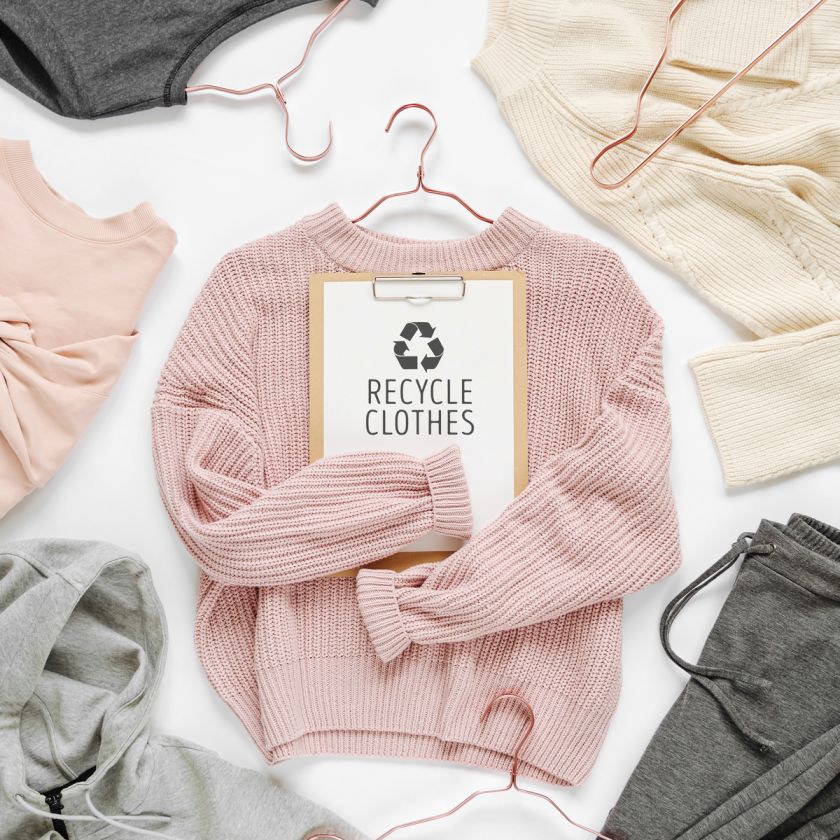Making Clothes with Recycled and Reused Materials



Creating clothes using recycled and reused materials is an essential step towards helping with the growing issue of climate change and other aspects of the ecosystem harmed by the waste generated by the fashion industry. When recycled or reused materials help in creating clothes, there are a lot of materials that can be used for this process. Materials that can be used range from old discarded scraps of clothes to plastics. A lot of the waste from the fashion industry ends up in landfills, or randomly pollutes various parts of the ecosystem. When the approach of recycling or reusing is introduced to create clothes it aids in the process of slowly yet gradually introducing sustainability in the fashion industry. Sustainability is a basic term that means taking necessary and responsible decisions to help create minimal to no waste while promoting less creation of waste. There are various ways the material can be recycled, it can be mixed with other fabrics to create a new material, shredded to make the garment and in some cases, the shredded material can be dyed for a particular color needed. Recycling and reusing materials to make clothes is a sustainable and efficient method to decrease production costs.
According to this article, consumers throw away 60% of their garments in the first year on average. In 2020, 18.6 million tonnes of garments are expected to wind up in landfills. The Ellen MacArthur Foundation reports that over 150 million tonnes of garment waste would flood landfills by 2050 if current trends continue. Consider this scenario: a truckload of textiles is thrown into a landfill every second. The average dump truck has a diameter of 76 cubic meters. Over half a million tonnes of microfibre contamination is produced by the clothing industry, which ends up in the ocean. Every year, half a million tonnes of microfibre are produced, which is the equal of 50 billion plastic bottles.
The above information demonstrates the huge amount of wastage contributed by the fashion industry poses a hazard to the environmental health of the world, and recycling and reusing materials will help in minimizing the waste being generated. The Journal of Fashion Marketing and Management recently released an in-depth examination of customer attitudes and behavior, concluding that the modern market for sustainable clothes is not confined to environmentalists. According to the findings, most customers who do not often buy secondhand clothing or prioritize eco-friendly products in their purchasing criteria are likely to buy recycled clothing provided the price, quality, style, and comfort are comparable to new garments created from virgin raw materials.

Clothes take decades to degrade. There are two types of textiles sources for recycling- the post-consumer stage and the pre-consumer stage. Post-consumer sources include garments, vehicle upholstery, household items, and some other materials as well. The pre-consumer sources include scrap created with the by-product of yarn and fabric manufacture and post-industrial scrap textile from other industries. The process is simple and ranges from simple to complex steps, for natural textiles the basic steps start with sorting of the materials based on the color, materials, and other distinguishable factors. Color sorting produces a cloth that doesn't require re-dying. Color sorting eliminates the need for re-dying, saving energy, and reducing pollution. Textiles are then shredded or pulled into fibers, with other fibers occasionally introduced into the yarn. Shredded materials are pulled into fibers. Other fibers may be added to the yarn depending on its intended usage. After that, the yarn is cleaned and blended in a carding process. The yarn is then re-spun and is ready to be used in weaving or knitting. However, some fibers are not spun into yards. Some are crushed for textile filling in mattresses, for example. Garments made of polyester are shredded and then granulated before being processed into polyester chips. These are then melted down to make new polyester fibers for use in new polyester fabrics. In the textile business, polyester is the most widely used fiber. Recycled polyester and nylon are made from pre-or post-consumer, pre-or post-industrial waste materials such as PET plastic bottles, apparel, or nylon fishing nets, which would otherwise be thrown away or burned.
Clothing sharing and renting are spawning a creative sub-industry geared at extending the active lifetime usage of apparel. According to similar surveys conducted in other EU countries, only 10% of respondents considered buying used in their recent purchases. Although industry experts believe that textile reuse and recycling are better for the environment than incineration or landfilling, not all recycled fibers are better for the environment than all types of virgin fibers.
To analyze the material's environmental sustainability, a life cycle perspective is necessary, which takes into account all relevant impact categories, including collecting and sorting operations. Various open-loop recycling allocation methods can have a big impact on whether recycled fiber is more sustainable than virgin fiber. Did you know that conventional cotton requires a lot of energy to grow? The fluffy white plant necessitates a lot of water, a lot of areas to grow, a lot of toxic chemicals, and is labor hard in general. Despite this, cotton is one of the most straightforward textiles to recycle. It's important to determine whether a recycled cotton garment is made from organic or conventional cotton, as well as whether it was created from pre-or post-consumer trash.

Cotton, thankfully, is completely biodegradable, meaning it can degrade over time. As a result, if done properly, it fits into a circular concept, distinguishing it from many other synthetic recycled materials. The most emphasis is paid to reusing post-consumer clothing, and it has come to symbolize one of the first steps on the road to sustainability in many respects. Designing with discarded garments is also something that customers can get involved in by donating. In terms of recycling and upcycling, each of the fashion market sectors of haute couture, ready-to-wear (pret-a-porter), mass-market (premium, mid-market, quick fashion, and cheap market) faces design issues.
Clothing composed of natural fibers (cotton, linen) should decompose quickly. When clothing is thrown out and ends up in landfills, however, they lack the oxygen essential for organic things to decompose. We save a lot of space by not throwing our garments in the trash because they don't end up in landfills. Landfills are destructive in several ways, affecting not only our environment but also city budgets and community health. Clothing production consumes a significant amount of energy. Every item of clothes you wear has undergone a lengthy manufacturing process that consumes a significant quantity of power, water, and other forms of energy. Recycling garments conserves energy by lowering or eliminating the need to create new materials.
Get all your doubts sorted, act with the best knowledge and let Fashinza guide you for sourcing of materials.



















